Introduction
Do Rabbits Blink: The natural world is a tapestry of captivating behaviors and adaptations that shed light on the lives of its inhabitants. Amidst this intricate web, even the seemingly ordinary actions take on profound significance. One such behavior that raises curiosity is blinking—a simple act that serves vital functions for many species. Among these creatures, rabbits, those swift and endearing denizens of various environments, exhibit a distinctive approach to blinking. In this exploration, we delve into the intriguing question: Do rabbits blink? By unraveling the mechanics and implications of rabbit blinking, we unveil a facet of their existence that contributes to their survival and interaction with their surroundings.
Through this inquiry, we embark on a journey of discovery, peering into the world of rabbit behavior to gain a deeper understanding of how they navigate their environment through the subtle act of blinking.The natural world is full of captivating behaviors and adaptations that shed light on the lives of various creatures. Among these fascinating aspects, the seemingly mundane act of blinking can reveal intriguing insights into an animal’s physiology and behavior. Rabbits see, those enchanting and swift inhabitants of diverse environments, possess their own distinctive way of blinking that reflects their unique adaptation to their surroundings.
In this exploration,Through this inquiry, we uncover not only the physiological mechanisms behind rabbit blinking but also the implications it holds for their survival and interaction with their environment. Let’s unravel the mystery of rabbit blinking and gain a deeper appreciation for the subtle yet vital behaviors that shape these endearing creatures’ lives.
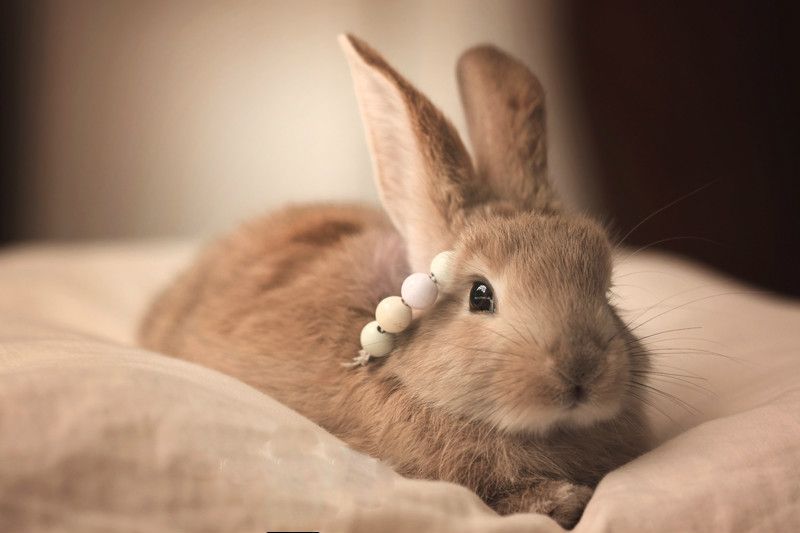
Do rabbits ever close their eyes?
They can sleep with their eyes closed too, but usually rabbits will only close their eyes when they are sleeping if they feel very safe. So you might think your rabbit never sleeps because they never close their eyes, but in reality they’re sneaking a nap right in front of you.
Vigilance and Adaptation
Rabbits are known for their acute senses and their role as both prey and foragers in the wild. As a result, they have evolved with specific behaviors that allow them to stay alert and attuned to their surroundings. One of these behaviors is their reduced frequency of blinking and eye closure. While rabbits do blink, they do so less frequently than many other animals. This adaptation is tied to their need to detect movement and potential threats quickly, ensuring their survival in the wild.
The Blinking Pattern
Observing a rabbit closely might reveal that they indeed blink, albeit infrequently. This behavior aligns with their crepuscular nature—being most active during the dawn and dusk hours—when their surroundings are dimly lit. Reduced blinking during these times allows them to maintain vigilance and navigate effectively. However, rabbits are also known to fully close their eyes during periods of deep relaxation, sleep, or when they feel safe and secure.
Nictitating Membrane
Rabbits have an extra layer of eye protection in the form of a nictitating membrane, also known as the “third eyelid” or “haw.” This semi-transparent membrane serves as an additional safeguard against debris and offers a degree of moisture to the eyes. The presence of this membrane allows rabbits to remain relatively protected even when they do not fully close their eyes.
Trust and Comfort
Fully closed eyes can indicate that a rabbit feels safe, comfortable, and at ease in its environment. Rabbits are cautious animals that rely on their senses to detect any potential threats. When a rabbit closes its eyes fully, it’s often a sign that it trusts its surroundings and is confident in its safety.
Sleep Patterns
Rabbits have a unique sleep pattern where they experience multiple shorter sleep cycles throughout the day and night. During these periods, they may close their eyes fully while resting or sleeping. However, their sleep cycles are brief and vigilant, as their survival instincts require them to be ready to react to any sudden changes in their environment.
Why do rabbits blink their eyes?
They even sleep with their eyes open, blinking only their nictitating membranes, or clear third eyelids, to keep their eyes moist.
Protection and Moisture
Like many creatures, rabbits blink to protect their sensitive eyes from environmental elements. Dust, debris, and potential irritants are ever-present in the wild and can harm their eyes if left unchecked. By blinking, rabbits clear away particles that might have settled on their eyes’ surface. Moreover, blinking helps spread tears evenly across the eyes, providing essential moisture and preventing dryness.
Maintaining Visual Clarity
Rabbits have evolved with a keen sense of awareness, and their eyesight plays a vital role in detecting movement and potential threats. Blinking helps maintain the clarity of their vision by removing any foreign substances that might obscure their view. In their natural habitat, where swift reactions are crucial for survival, clear and unobstructed vision is of paramount importance.
Blinking: A Signal of Comfort
Rabbits’ blinking behavior extends beyond mere eye protection. When a rabbit fully closes its eyes or blinks slowly, it often indicates a state of relaxation, comfort, and trust. Rabbits are cautious animals by nature, always attuned to their surroundings for potential threats. By fully closing their eyes, they signal that they feel safe and secure in their environment, at least momentarily letting their guard down.
Sleep and Rest
While rabbits are known for their crepuscular activity, they still need periods of rest and sleep. During these intervals, rabbits often close their eyes fully, allowing them to relax and recharge. Despite their relatively brief sleep cycles, these moments are essential for their overall well-being.
Balancing Vigilance and Relaxation
The balance between blinking for protection and relaxation underscores the complex nature of rabbit behavior. In the wild, survival hinges on their ability to alternate between vigilant awareness and moments of repose. By blinking strategically, rabbits manage to navigate their environment with caution while also finding moments of tranquility.
Blinking: A Silent Language
As social animals, rabbits also use body language to communicate with each other and with their human companions. Blinking, slow blinks, or closing their eyes can convey a message of trust and bonding. When a rabbit blinks in your presence, it might be signaling its comfort and affection for you.
Can rabbits wink?
Watching two rabbits together is the best way to learn about more subtle rabbit communication and even then it is easy to miss – the flick of an ear or the wink of an eye may be the only sign you get that one rabbit is telling the other something.
Expressiveness Through Eyes
Rabbits are incredibly expressive animals, using a variety of body language cues to convey their feelings and intentions. While they may not wink in the same deliberate manner as humans, they do exhibit behaviors that could be interpreted as winking, especially when one considers their unique eye anatomy and communication style.
Blinking Patterns
Rabbits have a distinctive pattern of blinking due to their evolutionary adaptations. Their reduced frequency of blinking is tied to their need for vigilance and awareness in their environment. The combination of reduced blinking and the presence of a nictitating membrane (the “third eyelid”) can create moments that appear similar to winking.
Slow Blinks
What might seem like winking in rabbits is often slow blinking. Slow blinking is a subtle and gentle gesture that rabbits use to communicate relaxation, comfort, and trust. When a rabbit half-closes its eyes or blinks slowly, it’s a sign that it feels safe and content in its environment. This can also be a response to being petted or receiving gentle attention from their human companions.
Communication with Humans
Rabbits can develop close bonds with their human caregivers and often use body language to express their emotions. If you’ve ever caught your rabbit engaging in slow blinks while looking at you, it could be a sign of their affection and trust. This gentle interaction can strengthen the bond between you and your furry friend.
Social Interaction Among Rabbits
Rabbits also communicate with each other through various forms of body language, including eye movements. In rabbit social groups, slow blinks can serve as signals of comfort and non-aggression. These gestures contribute to the intricate social dynamics that characterize rabbit communities.
Misinterpretation
While rabbits do engage in behaviors that resemble winking, it’s essential to interpret their actions within the context of their natural behaviors and communication patterns. Rabbits’ expressions and movements might not always align directly with human gestures and meanings. It’s important to observe your rabbit’s overall behavior and body language to understand their intentions accurately.
Do rabbits have good eyesight?
Rabbits tend to be farsighted, which means they can see long distances really well. However, their vision for items nearby isn’t always so great. Part of the reason for this is the placement of the eyes on a rabbit’s head. Rabbits’ eyes are located high on the sides of the skull.
Adaptations for Survival
Rabbits’ eyesight is finely tuned to suit their role as prey animals. Their large eyes provide a wide field of view, spanning nearly 360 degrees, allowing them to detect potential threats from various angles. This panoramic vision aids them in identifying predators and potential dangers in their surroundings. However, this expansive field of view sacrifices some binocular overlap, affecting their depth perception.
Crepuscular Advantage
Rabbits are crepuscular creatures, meaning they are most active during the twilight hours around dawn and dusk. Their eyes are well-suited for these periods of low light. The abundance of rod cells, which are specialized for detecting dim light, enhances their ability to see in conditions of reduced illumination. This adaptation allows them to maintain vigilance during the times when predators might be most active.
Color Perception
Rabbits possess dichromatic color vision, primarily sensitive to blue and green wavelengths of light. This limited color spectrum is a result of their evolutionary adaptation to their environment. While they might not experience the full range of colors that humans do, their color vision is tailored to their needs, such as identifying food sources and distinguishing potential dangers.
Tapetum Lucidum
One of the most intriguing features of rabbit eyesight is the tapetum lucidum, a reflective layer behind the retina. This layer enhances their night vision by reflecting light back through the retina, giving their photoreceptor cells a second chance to detect available light. This adaptation enables them to make the most of the ambient light present during their active hours.
Visual Communication
Rabbits communicate through a combination of body language and visual cues. They use their eyes to convey emotions and intentions. For instance, slow blinking is often interpreted as a sign of relaxation and trust. Rabbits’ expressive eyes contribute to their ability to bond with their human companions and navigate social interactions with their fellow rabbits.
Are bunnies intelligent?
Yes, it turns out that rabbits are very smart! Some breeds are even trainable. For example, you can teach a bunny to recognise their names and come to you when called. Rabbits also have a very good memory: they don’t forget negative experiences and emotions easily.
Adaptive Behavior
Bunnies, as prey animals, have evolved with keen instincts and adaptive behaviors that aid their survival. Their ability to sense danger, detect predators, and react swiftly to threats demonstrates a type of intelligence rooted in their evolutionary history. Their finely attuned senses and their capacity to respond to their environment reflect a form of intelligence tailored to their ecological niche.
Problem-Solving Abilities
Rabbits exhibit problem-solving skills, albeit in ways that might differ from those of other animals. Their behaviors in the wild, such as creating complex burrows for shelter, demonstrate their ability to navigate challenges and adapt their environment to their needs. In domestic settings, rabbits might engage in various problem-solving activities, such as figuring out how to access food or navigate their surroundings.
Social Intelligence
Bunnies are social animals, both in the wild and when living with human companions. Their interactions with other rabbits and with humans showcase a form of social intelligence. They communicate through body language, facial expressions, and vocalizations to convey emotions, intentions, and establish social hierarchies. Observing their interactions provides insights into their capacity to navigate complex social dynamics.
Learning and Training
While rabbits might not exhibit the same type of learning and training as some other animals, they are capable of forming associations and learning from experiences. Many rabbits can be trained to recognize their names, respond to certain cues, and even use litter boxes. The key to successful training lies in understanding their preferences and using positive reinforcement techniques.
Enrichment and Curiosity
Bunnies are naturally curious and active creatures. Their inclination to explore their environment, investigate new objects, and engage in playful activities indicates a form of intelligence that encourages mental stimulation. Providing them with enrichment items, toys, and opportunities for mental engagement can tap into this curiosity and keep their minds active.
Individual Variation
It’s important to recognize that intelligence varies among individual rabbits, just as it does among humans and other animals. Some rabbits might display a higher aptitude for problem-solving, while others might excel in social interactions. Understanding and appreciating each rabbit’s unique strengths and quirks contributes to a holistic perspective of their intelligence.
Why do rabbits look at you?
Staring is very common in rabbits. It’s likely your rabbit stares at you out of love and happiness, but they could also be hungry, or confused.
Curiosity and Awareness
Rabbits are naturally curious creatures. When they look at you, it might be their way of examining their environment and the people in it. Their wide-set eyes and keen senses make them attentive observers of their surroundings. By looking at you, rabbits gather information about potential threats, sources of food, and interactions that might impact their well-being.
Bonding and Social Interaction
Rabbits, whether in the wild or as domestic pets, engage in social interactions that involve body language and visual cues. Looking at you can be a way for rabbits to initiate or respond to interactions. In the context of domestic rabbits, a rabbit looking at you might be seeking attention, asking for food, or attempting to establish a bond. This gaze serves as a way of connecting with you and communicating their needs.
Expressing Emotions
Rabbits are not only observant but also expressive animals. Their gaze can convey a range of emotions, from curiosity and playfulness to caution and even unease. Understanding the context and accompanying body language is crucial in interpreting the emotions behind their gaze. A relaxed rabbit might look at you with a soft, inquisitive gaze, while a tense rabbit might exhibit a more alert and wary expression.
Communication Through Body Language
Rabbits rely heavily on body language to communicate with each other and with humans. Their gaze is just one aspect of their overall communication repertoire. Ears, tail position, and body posture all contribute to the message they’re conveying. When a rabbit looks at you, they might also be assessing your body language and cues to gauge your intentions.
Establishing Trust
In the process of bonding with rabbits, looking at each other can play a pivotal role. Over time, a rabbit’s gaze might evolve from cautious observation to one of comfort and trust. As your rabbit becomes familiar with your presence and associates it with positive experiences like feeding, petting, and play, their gaze can transform into a symbol of the bond you share.
Individual Variation
It’s important to note that rabbits, like humans, have individual personalities and preferences. Some rabbits might be more naturally curious and expressive, while others might be more reserved. Understanding your rabbit’s unique traits and behaviors will help you interpret their gaze more accurately.
Can a rabbit lick you?
Licking is a way bunnies groom each other. If your bunny licks you, it’s a sign of affection as you’ll often see pairs of bunnies grooming each other this way. A bunny lick is a sign of a bond.
Expressing Affection
Rabbits, though small and seemingly reserved, have their own distinctive ways of showing affection. While they might not exhibit affection in the same overt manner as some other animals, rabbits can indeed express fondness for their human caregivers through a variety of behaviors, including licking.
Grooming and Social Bonds
In the wild, rabbits engage in mutual grooming as a way of strengthening social bonds within their groups. Grooming is not only a means of keeping each other clean but also a way of reinforcing social hierarchies and affiliations. When a rabbit licks you, it might be extending this behavior as a sign of trust and companionship.
Licking as a Gesture
When a rabbit licks you, it’s often a gesture that conveys comfort and familiarity. It might signify that your scent is recognized and accepted by the rabbit. In some cases, rabbits might also lick as a way of exploring their environment, using their senses to understand different textures and tastes.
Trust and Relaxation
Licking can be a sign that your rabbit feels relaxed and at ease in your presence. As prey animals, rabbits are naturally cautious, and when they allow themselves to let their guard down and engage in grooming behaviors, it’s an indication of the trust they have in their surroundings.
Interpretation and Context
Understanding a rabbit’s behavior, including licking, requires considering the context and accompanying body language. Observing the rabbit’s overall behavior, ear positions, tail posture, and other cues can help you interpret the message behind the lick. Just as with any form of animal behavior, it’s important to recognize that individual rabbits might have their own preferences and comfort zones.
Reciprocating Affection
Building a strong bond with a rabbit often involves reciprocating their affection in ways they appreciate. This might include gentle petting, providing them with enrichment and playtime, and creating a safe and comfortable environment. Your response to their gestures, including licking, contributes to the development of a trusting and positive relationship.
Do rabbits trust humans?
Rabbits are often very shy and can take a while to warm up to new people and trust them. It might seem like they are aloof or skittish animals by nature. However, if you give them time and teach them to trust you, you’ll start to notice your rabbit choosing to stay with you and become more affectionate.
Building a Foundation
Trust is a gradual process that requires time, consistency, and positive interactions. Rabbits, as prey animals, have evolved to be cautious and observant of their environment to ensure their survival. When interacting with humans, they bring their natural wariness and curiosity, forming the basis of their relationship with us.
Time and Patience
Earning a rabbit’s trust is a journey that often begins with patience. Respect their boundaries and allow them to approach you on their terms. Spend time in their presence without imposing yourself on them. Over time, your consistent presence and gentle interactions can pave the way for a bond built on trust.
Positive Associations
Positive experiences play a pivotal role in building trust. Offering treats, favorite foods, and gentle petting when the rabbit is comfortable can help create positive associations with your presence. Gradually, they come to recognize you as a source of comfort and pleasant experiences.
Reading Body Language
Understanding a rabbit’s body language is key to gauging their level of comfort and trust. Relaxed ears, a calm posture, and a willingness to approach you indicate a growing sense of security. Conversely, crouching, hiding, or thumping can signal discomfort. Observing their cues allows you to adjust your interactions accordingly.
Socialization and Bonding
Rabbits are social animals by nature, often forming close bonds with other rabbits in their groups. When a rabbit extends its social circle to include humans, it’s an indication of trust. Leaning into petting, grooming behaviors, and even allowing themselves to fall asleep in your presence demonstrate their comfort and connection.
Individual Variation
It’s important to note that trust varies among individual rabbits. Some rabbits might be naturally more outgoing and trusting, while others might be more reserved due to their temperament or past experiences. Respecting their personalities and boundaries contributes to a positive and respectful relationship.
Respecting Autonomy
As trust grows, rabbits might initiate interactions, seek out your company, and even exhibit behaviors like grooming and licking. However, it’s crucial to remember that rabbits are still independent creatures. They might need time alone or prefer certain types of interactions over others. Respecting their autonomy fosters a relationship built on mutual understanding.
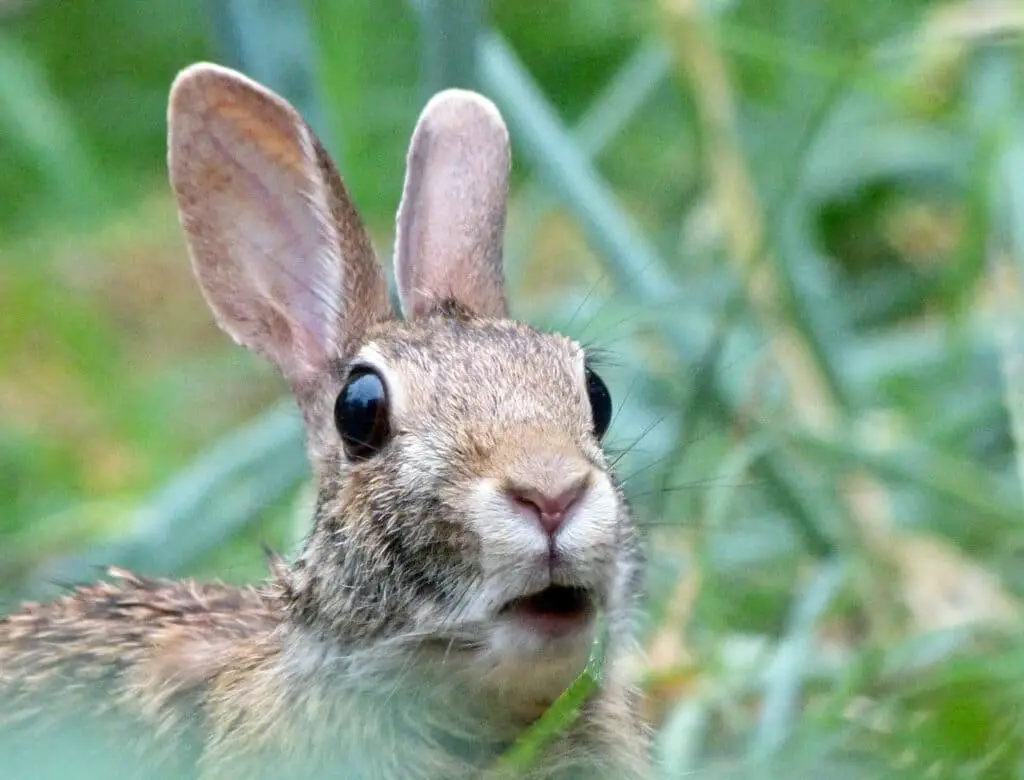
Conclusion
In the world of rabbits, the act of blinking unveils a subtle yet essential aspect of their behavior and physiology. While rabbits do blink, their distinctive adaptation is marked by a reduced frequency of blinking compared to many other animals. This adaptation serves multiple purposes in their survival toolkit.
Rabbits’ relatively infrequent blinking allows them to remain vigilant and attuned to their surroundings. Their wide-set eyes and positioning on the sides of their heads grant them nearly panoramic vision, which is crucial for detecting potential threats in their environment. Their specialized blinking pattern, combined with their crepuscular nature, ensures they remain alert during their active hours around dawn and dusk.
Additionally, rabbit blinking helps to maintain their ocular health. Although they blink less frequently, their eyes are equipped with a third eyelid, known as the nictitating membrane or “haw.” This membrane helps protect the eyes from debris and dust while providing a degree of moisture.
The distinct blinking behavior of rabbits offers a glimpse into their evolutionary adaptations. Their reduced blink rate aligns with their survival strategies, enabling them to stay vigilant, detect movement, and navigate their environment effectively. Beyond their captivating appearance, rabbits’ unique blinking patterns add to their enigmatic charm and remind us of the intricate ways in which creatures have evolved to thrive in their habitats.

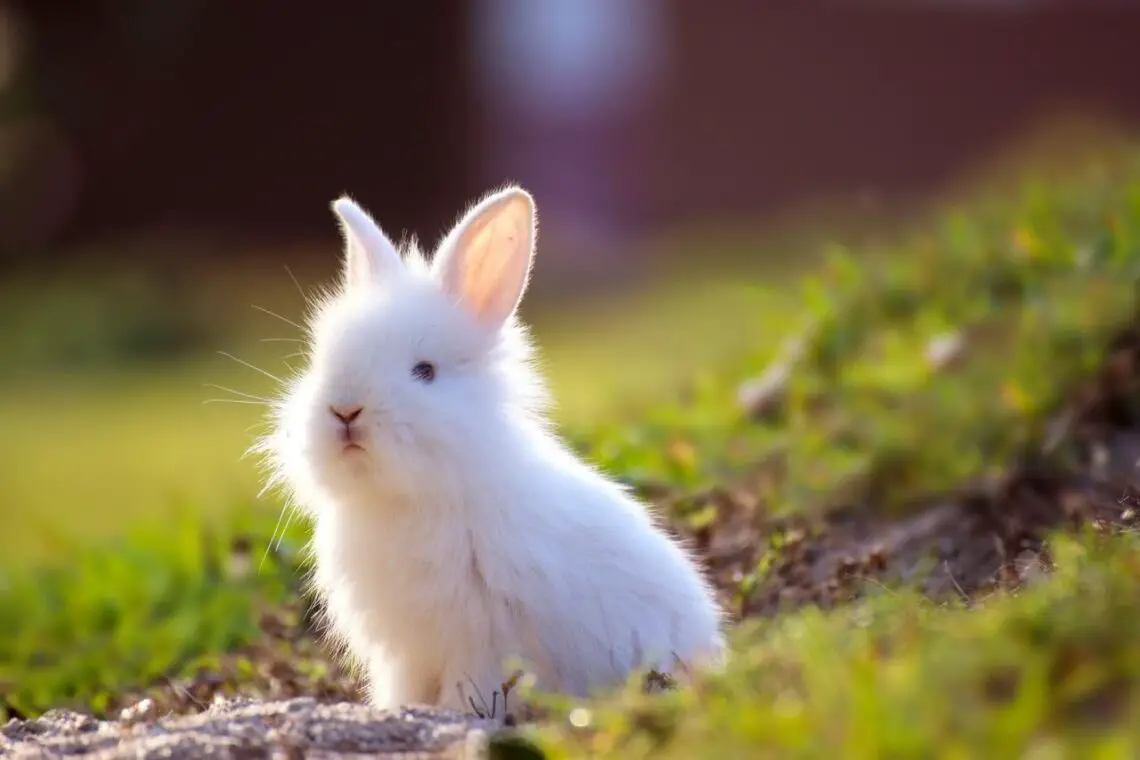
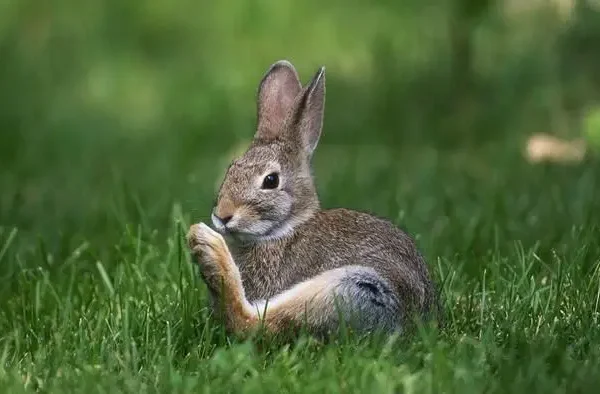
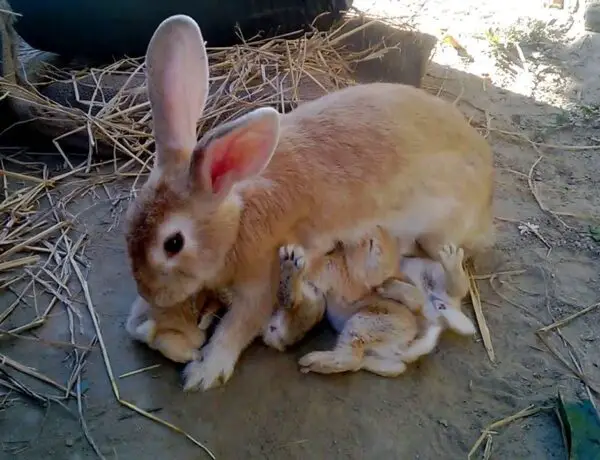
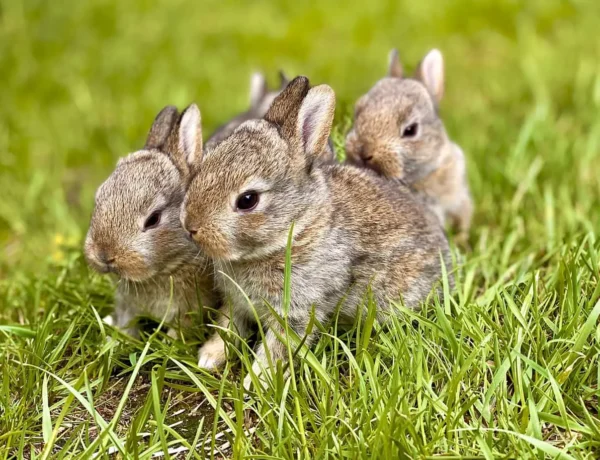
No Comments